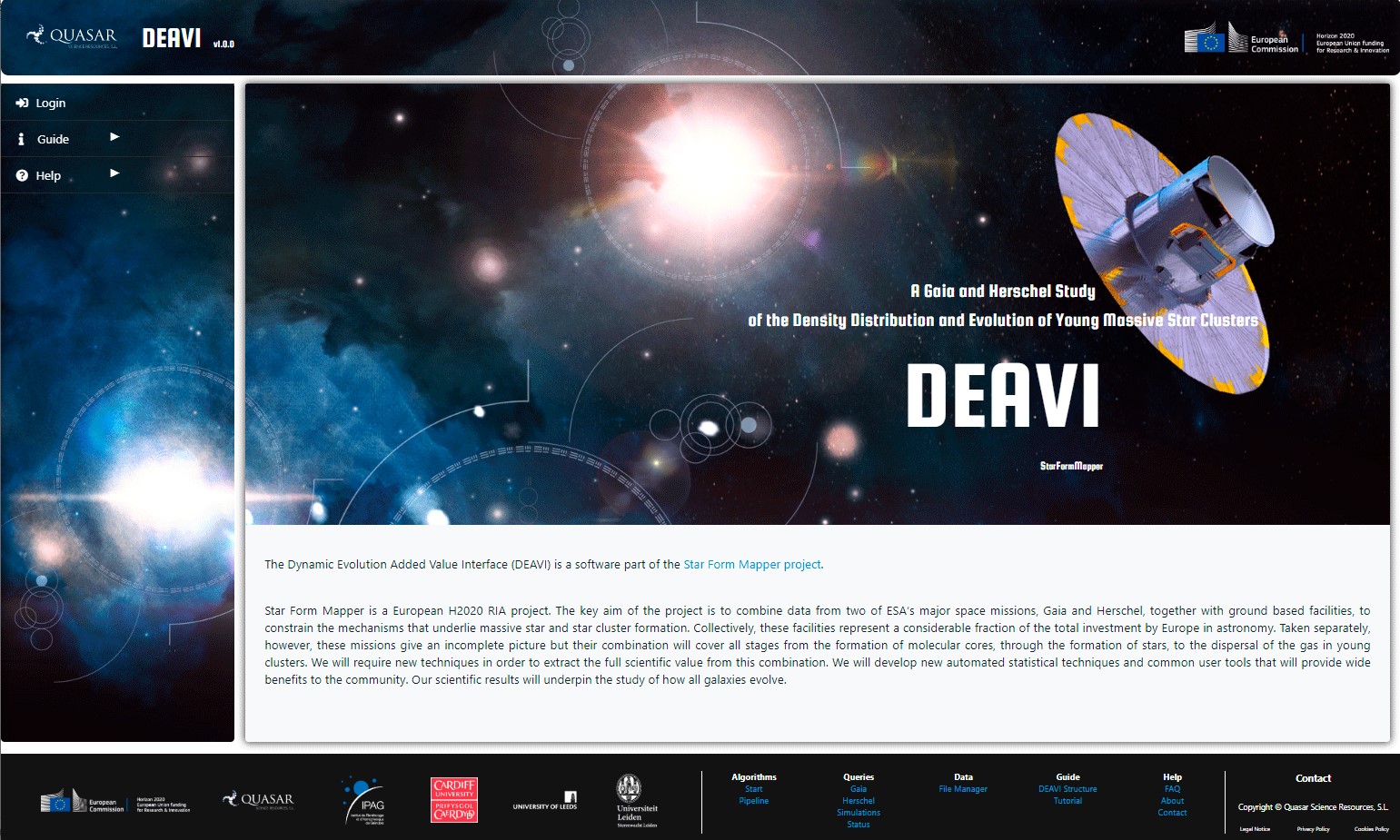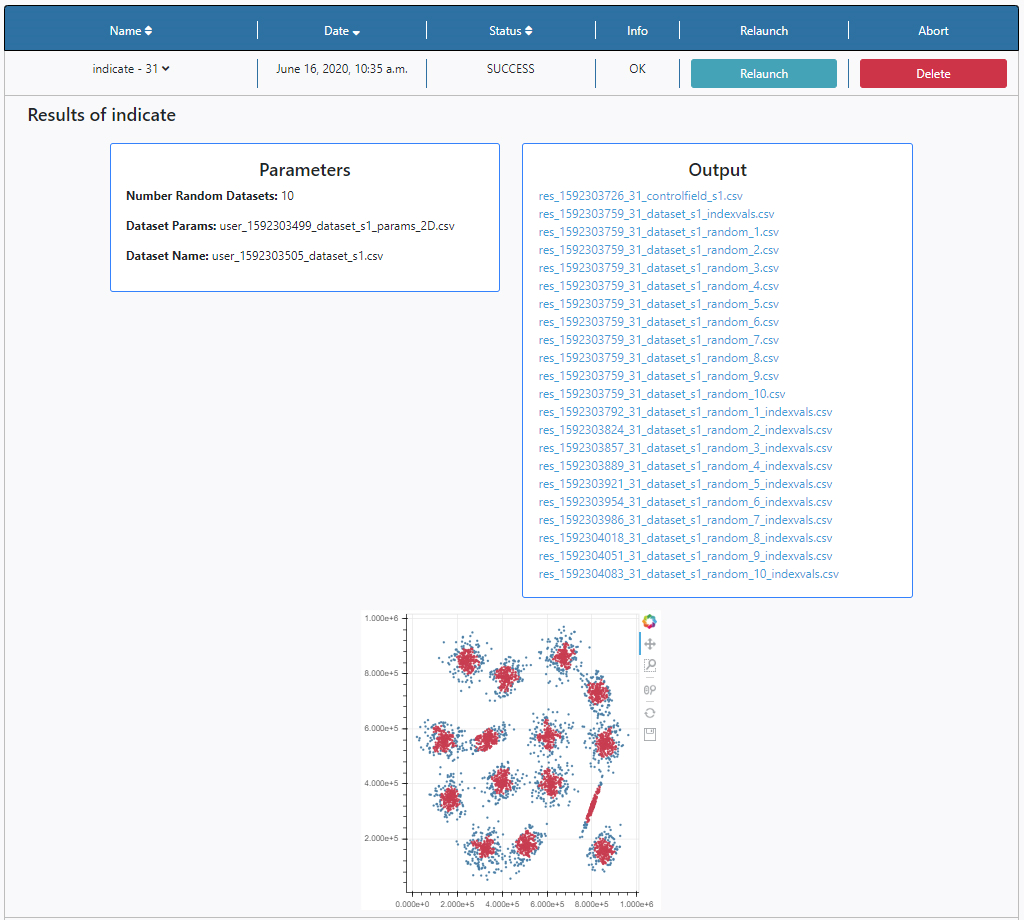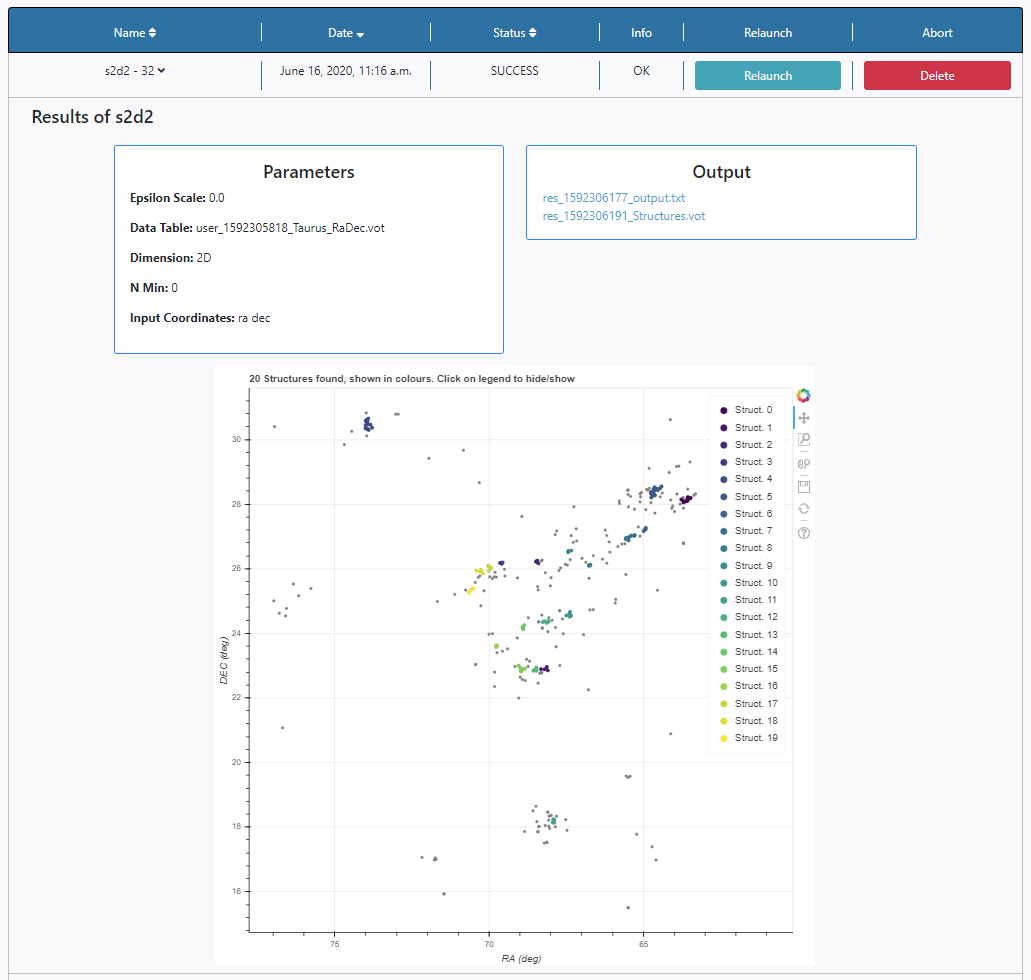The Dynamic Evolution Added Value Interface (DEAVI) is the software developed by Quasar Science Resources S.L. for the SFM project. DEAVI runs the scientific algorithms developed and provided by the scientific team within the Consortium during the duration of the project. DEAVI presents the results of the algorithm to the user and allows downloading any results of the analysis. DEAVI incorporates access to the Gaia and Herschel archives and other auxiliary data. The algorithms can be executed against the results of queries to these archives.

DEAVI incorporates several algorithms. The main ones are:
- INDICATE (INdex to Define Inherent Clustering And TEndencies) is a novel statistical clustering tool to assess and quantify the degree of spatial association of an object in a dataset. Highly versatile, INDICATE has many applications, including characterising morphological stellar features and tracing spatial evolution in star forming regions.

Image: Buckner, A. M. et al., 2019, The spatial evolution of young massive clusters-I. A new tool to quantitatively trace stellar clustering.
Astronomy & Astrophysics, 622, A184.Buckner, A. M. et al., 2020, The Spatial Evolution of Young Massive Clusters II.
Looking for Imprints of Star Formation in NGC 2264 with Gai DR2. Astronomy & Astrophysics, 636, A80.
- S2D2 is an algorithm that uses the Density-Based Spatial Clustering of Applications with Noise (DBSCAN) to detect the smallest significant structure in a spatial/spatial-kinematic space. The procedure proposes, in structured regions, the calculation of the epsilon scale and Nmin parameters for DBSCAN to retrieve the smallest structures in the region with a 3-sigma level significance. If the region is not structured, or the user wants it, epsilon scale and Nmin can be supplied, and DBSCAN will be run with the user defined parameters, however, without guaranteeing any level of significance.

Image: Papers ref. Gonzalez, M. et al., 2020, S2D2: Small-scale significant Structure DBSCAN Detection. I. NEST detection in 2D regions,
In preparation. (Submitted).
